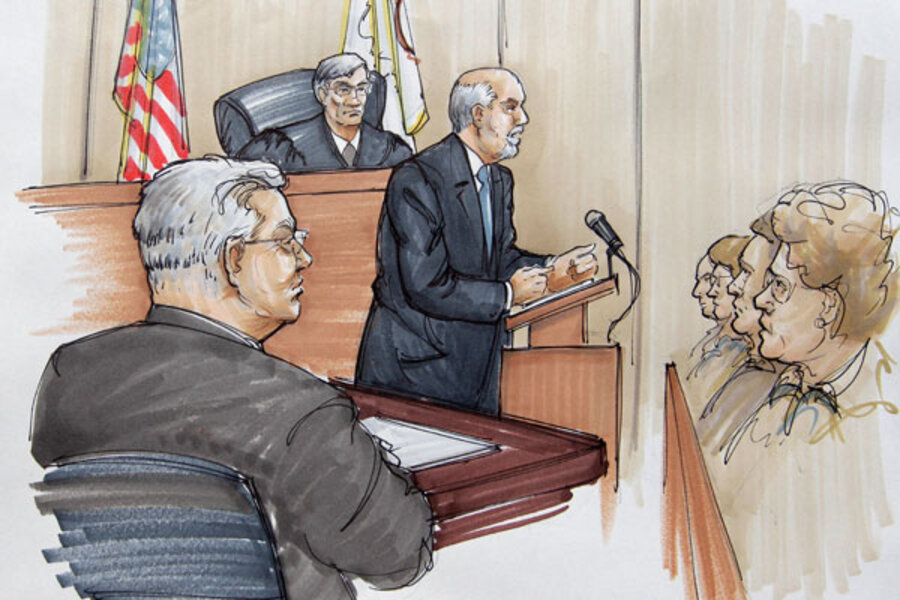Why so many Americans are riveted by the Drew Peterson case
Loading...
| Chicago
The Drew Peterson saga has played and replayed for five years on daytime talk shows, in prime-time TV, and even in a made-for-cable movie starring a beefed-up and mustachioed Rob Lowe. But on Tuesday, the real-life story takes its most dramatic turn yet: in a courtroom.
Mr. Peterson is the lone defendant in a first-degree murder trial involving the 2004 bathtub drowning of Kathleen Savio, his third wife. Opening arguments started Tuesday in Joliet, Ill. Although he has not been charged, Peterson is also linked to the disappearance of his fourth wife, Stacy Peterson, who went missing in 2007.
Peterson says that he is not guilty of Ms. Savio’s death and that Ms. Peterson left him for another man and is in hiding to make his life miserable.
Although salacious murder trials are not new, the Peterson saga is overloaded with such elements. A 30-year police sergeant in the southwestern suburbs of Chicago who was prone to marrying women half his age or younger, Peterson taunted the media and his accusers for years before formally being charged in 2009. To many, his jowly swagger, knack for one-liners, and glib attitude provided a visual that made Mr. Lowe’s cartoonish characterization seem pale in comparison.
Throw in the failure by police to locate Ms. Peterson’s body, his engagement to a potential fifth wife, Savio’s exhumed body, and sordid details of alleged domestic violence, and the case has developed a big following.
Which makes this trial, unlike so many others, so unique for public consumption,
“It has so much trial sex appeal, so to speak,” says Andrew Stoltmann, a Chicago attorney who has taught at Northwestern University Law School. “You have a couple of beautiful young women, one of whom is dead; you have a rogue husband suspected of the murder; and Drew Peterson is right out of central casting when it comes to pitching a villain.”
If the opening moments of the trial are any suggestion of the tenor moving forward, it doesn’t appear that the Peterson case will be resolved neatly.
Less than an hour into the opening statements Tuesday morning at the Will County courthouse, the defense filed a motion for a mistrial, the prosecution objected five times, and the judge and attorneys from both sides met privately three times.
Defense attorney Joel Brodsky blamed the media’s fascination with the case – particularly Fox News talk-show host Greta Van Susteren – with turning the public against his client. Mr. Brodsky said that police investigators willfully ignored evidence that could have explained why Savio might have drowned and that the prosecutors became interested in the case only following the media scrutiny surrounding Ms. Peterson’s disappearance.
“In this case, you're going to hear nothing but myth, rumor, and hearsay. But in court, you have a man's life in your hands. You have to ignore the myth and focus on the facts,” Brodsky told jurors.
James Glasgow, the state’s attorney in Will County who is prosecuting the case, is expected to rely on “Drew’s Law,” an Illinois law named after Peterson to make hearsay statements admissible if there is evidence suggesting the defendant contributed to the absence of the witness. The law will usher into the courtroom several statements Savio and Ms. Peterson made to their family and friends suggesting they feared for their safety.
Even if his past statements are not allowed into the courtroom, Peterson’s erratic public behavior since both Savio’s death and Peterson’s disappearance will work against him in the minds of jurors, says jury consultant Philip Anthony of Los Angeles.
“A normal murder suspect has to deal with the facts, whereas Mr. Peterson has to deal with the facts plus the drama he has created,” Mr. Anthony says.








